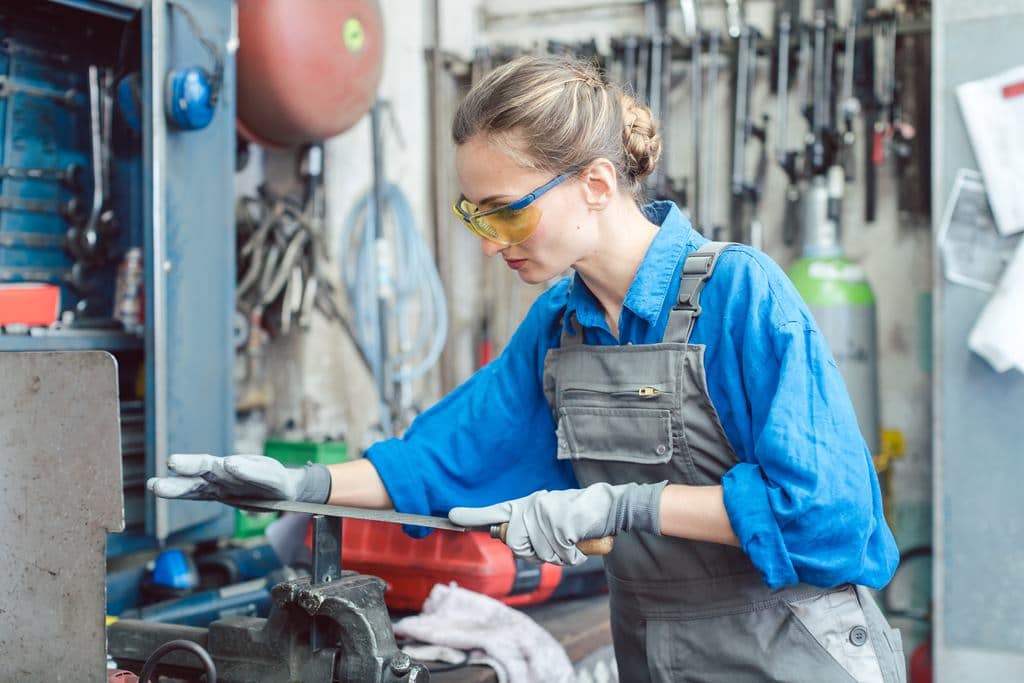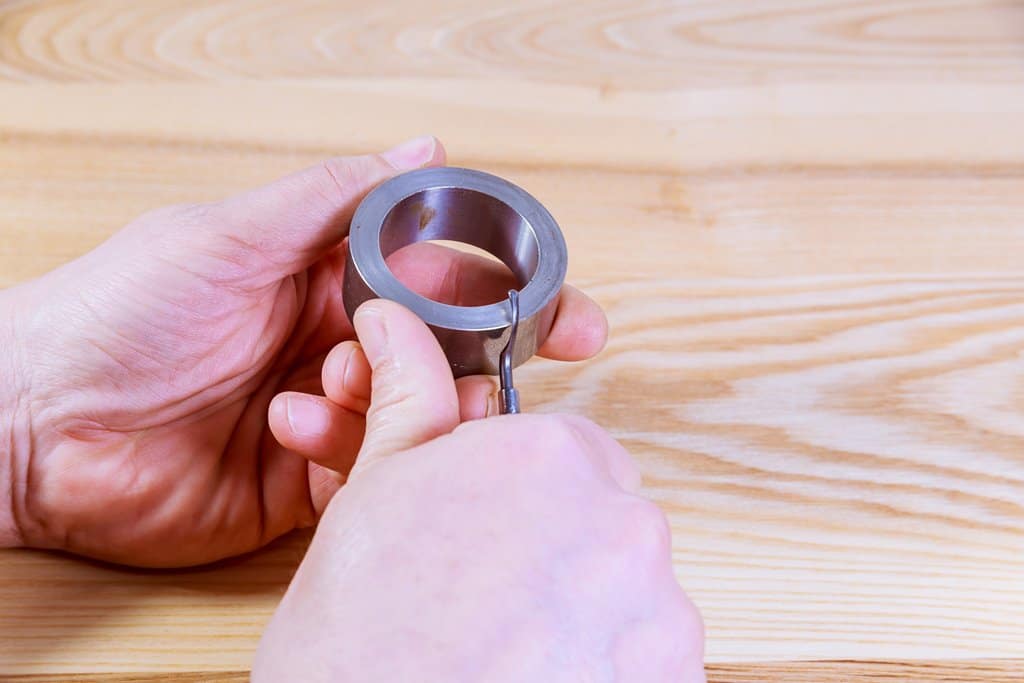What is Deburring?
Deburring plays a critical role in the manufacturing finishing process. Burrs are an undesirable by-product of certain manufacturing practices. These include drilling, punching, and turning. Burrs can obstruct drilled or punched holes, preventing air flow, or the flow of fluids or lubricants.
For decades, the standard deburring practice was to grind off the vertical burr or sand the surface. However, deburring terms have come to mean different things to different organizations or industries. As a result, it’s important to clearly outline what needs to take place. For some companies, removing only the vertical burr or dross is the focus. For others, rounding the edges in addition to removing the vertical burr is the goal.

Labor Advantages of Automating Deburring
Automated deburring offers multiple advantages. Decreased labor costs, increased efficiency, consistency, and providing a safer working environment have led many organizations to transition from manual to automated deburring. Manual deburring can be time-consuming and produce irregularities even with experienced operators. The skill level of these staff can vary greatly due to high turnover in the industry and manually finished parts can be inconsistent. However, with an automated deburring machine, parts can be processed more consistently and efficiently, in addition to requiring less staff.
There is another staff benefit resulting from automated deburring. In smaller companies, welders, laser operators, press brake operators, or other highly skilled workers do not have to pull double-duty by deburring and can instead remain focused on the areas of their expertise. Less skilled staff members can be utilized to simply load and unload components on an automated deburring machine. The savings in labor costs can be surprisingly substantial after switching from multiple shifts for multiple workers to automated deburring.

Increased Consistency and Efficiency
Automated deburring reduces inconsistencies, which in turn reduces the potential for the expense of rejected parts. Manual deburring by employees is largely influenced by the understanding of the employee and their individual performance. In contrast, automated deburring with set parameters can deliver a consistent, quality result. While the risk of returned parts can’t be completely eliminated, the reduction provided by automated deburring is valuable. In addition, automated deburring can also help reduce the possibility that irregular or faulty parts pass undetected through quality control checks and find their way to end product production.
It’s unlikely that most companies will use their most skilled workers for manual deburring because they are needed for their expertise in other areas. As a result, these tasks are often performed by less experienced workers. Their appraisals of their work may differ significantly and result in differing levels of quality for their parts.
Automated deburring can deliver a part that has a consistent finish each time a part passes through. Fabricators can consistently deliver the finish desired by the client, and the specs can be saved and used for future orders. The customer can depend on receiving the same deburred part received in previous orders.

The Cost of Disabling Injuries
Disabling injuries result in major expenses for employers in the United States. The U.S. Bureau of Labor Statistics (BLS) and the National Academy of Social Insurance (NASI) released a report in July 2021 on the top causes of disabling injuries based on data collected in 2018 from Liberty Mutual Insurance. Liberty Mutual’s Workplace Safety Index ranks the top 10 causes of serious, nonfatal workplace injuries resulting in lost work time in excess of five days by their direct costs to U.S. businesses. In 2021, these injuries totaled $58.61 billion in direct U.S. workers’ compensation costs. More than 89% resulted from the top 10.
Typical Work-Related Injuries and Conditions
The National Safety Council reports that the most frequently reported workplace injuries resulting in lost work time are:
- Overexertion: injuries related to lifting, pushing, pulling, holding, carrying, or throwing objects. Overexertion costs businesses $13.30 billion in direct costs
- Contact with objects or equipment
- Slips, trips, or falls: falls on the same level corresponded with direct costs of $10.58 billion, while falls to a lower level totaled $6.26 billion
While there is a risk for injury on any job, those in manufacturing and construction-related industries face an increased risk. Removing burr or slag and rounding edges manually exposes employees to hand deburring injuries. Finger lacerations and amputations are among the most common work-related injuries from deburring and other industrial finishing methods.
Another condition frequently experienced by deburring workers is white finger syndrome. Continued exposure to heavy vibration can lead to red or white discoloration and damage nerves regulating blood flow to the arms and hands. As a result, these blood vessels constrict in response to cold, reducing blood flow to the fingers. Irreversible finger numbness or debilitating pain, as well as a loss of manual dexterity, can develop. Workers need to take frequent breaks to prevent developing the disorder, as many of those with the condition are no longer able to work.
By 2025, 17 percent of the labor force will be older than 65, according to the Bureau of Labor Statistics. Strength and aerobic capacity begin to decline around the age of 45. Brian Roberts, assistant vice president of workers compensation and ergonomics at CNA Insurance, stated at the 2019 Fabricators & Manufacturers Association’s Safety Conference that fatigue leads to musculoskeletal disorders, especially in older workers. Musculoskeletal disorders are a significant cause of lost work time in U.S. manufacturing.
Reduction of Typical Work-Related Injuries and Conditions
Ergonomic improvements to workstations can help reduce high-risk postures involved in deburring processes. However, these improvements are limited to risk reduction and its related expenses. Automated deburring provides a significant advantage by increasing safety. While workers deburring metal parts by hand commonly suffer injuries of severe cuts, crushed fingers, or can develop white finger syndrome, automated deburring machines can provide an accurate finish while reducing the opportunities for staff to sustain these injuries. In addition, the production time required for this part is much less, increasing output as well as client satisfaction.
Conclusion: Automated Deburring Can Increase Efficiency & Saftey
The advantages of automated deburring are clear. Not only can work-related injuries be reduced by adopting automated deburring, but efficiency and productivity can be increased. Skilled workers can be utilized where they are most needed. Older workers are less exposed to injury risks and lost labor time is reduced. Automated deburring also consistently produces a more uniform, higher-quality, and reproducible part. Customers receive parts that are consistent and in optimal condition for painting or powder coating.
A customer’s deburring specifications are the primary factors influencing the deburring requirements. PushCorp offers several options for automated deburring. Our experienced team of engineers would be happy to offer guidance on which would be the most appropriate for your specific processes and components.
